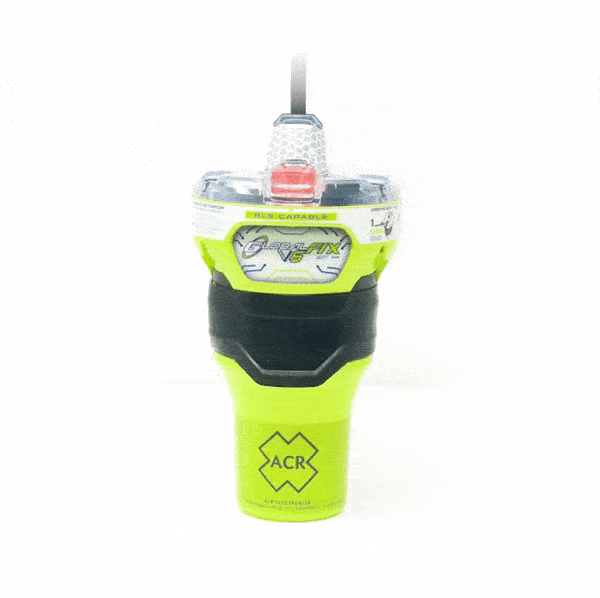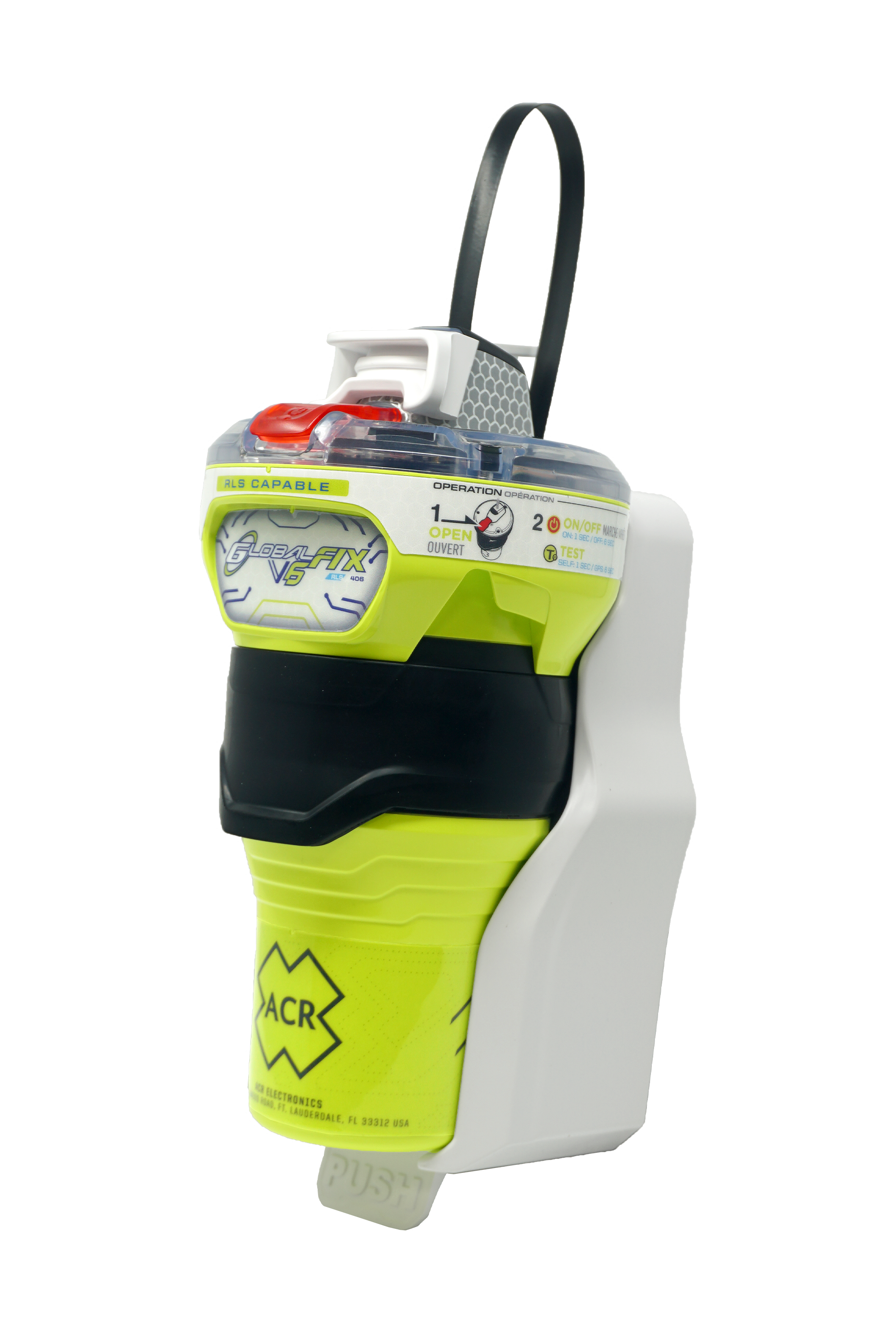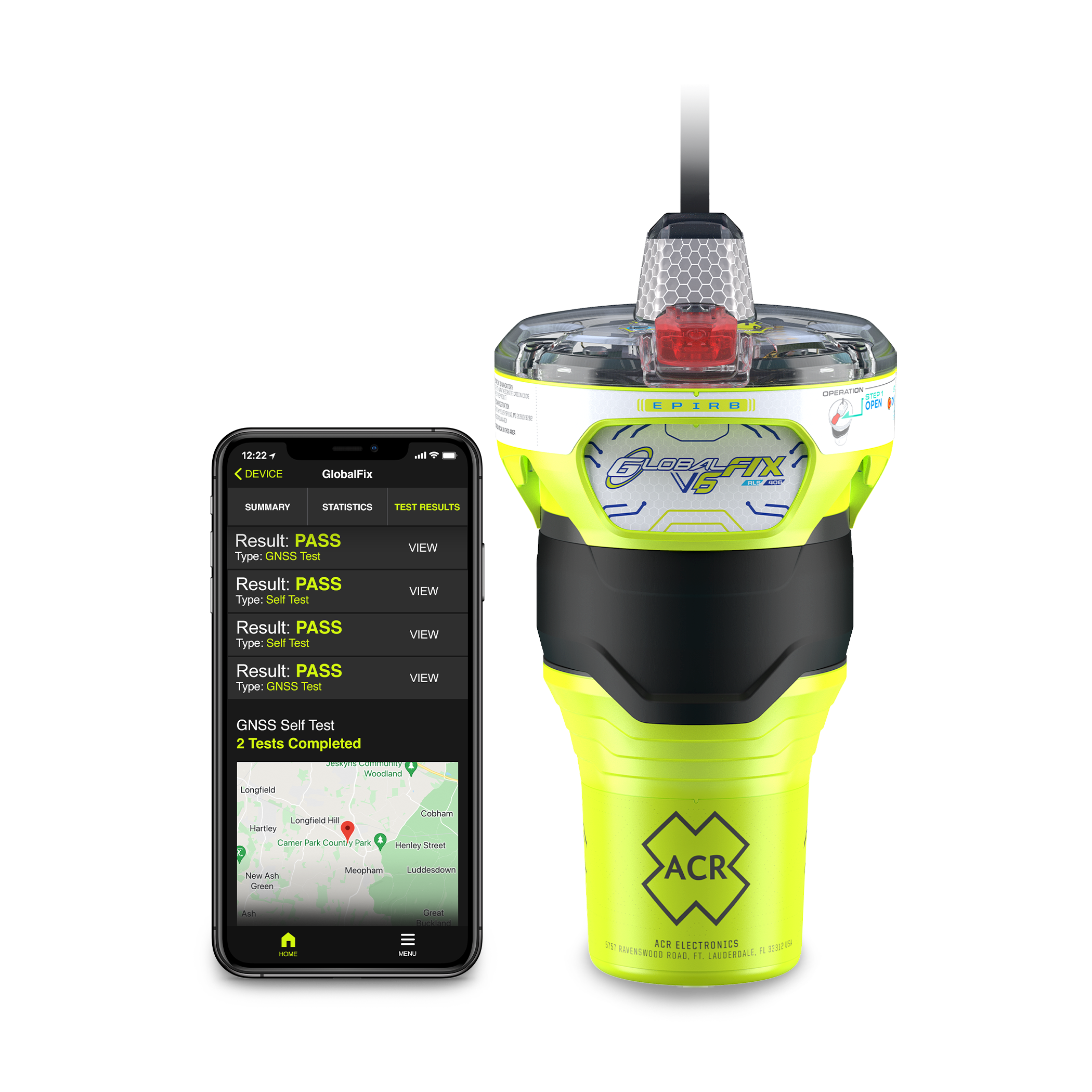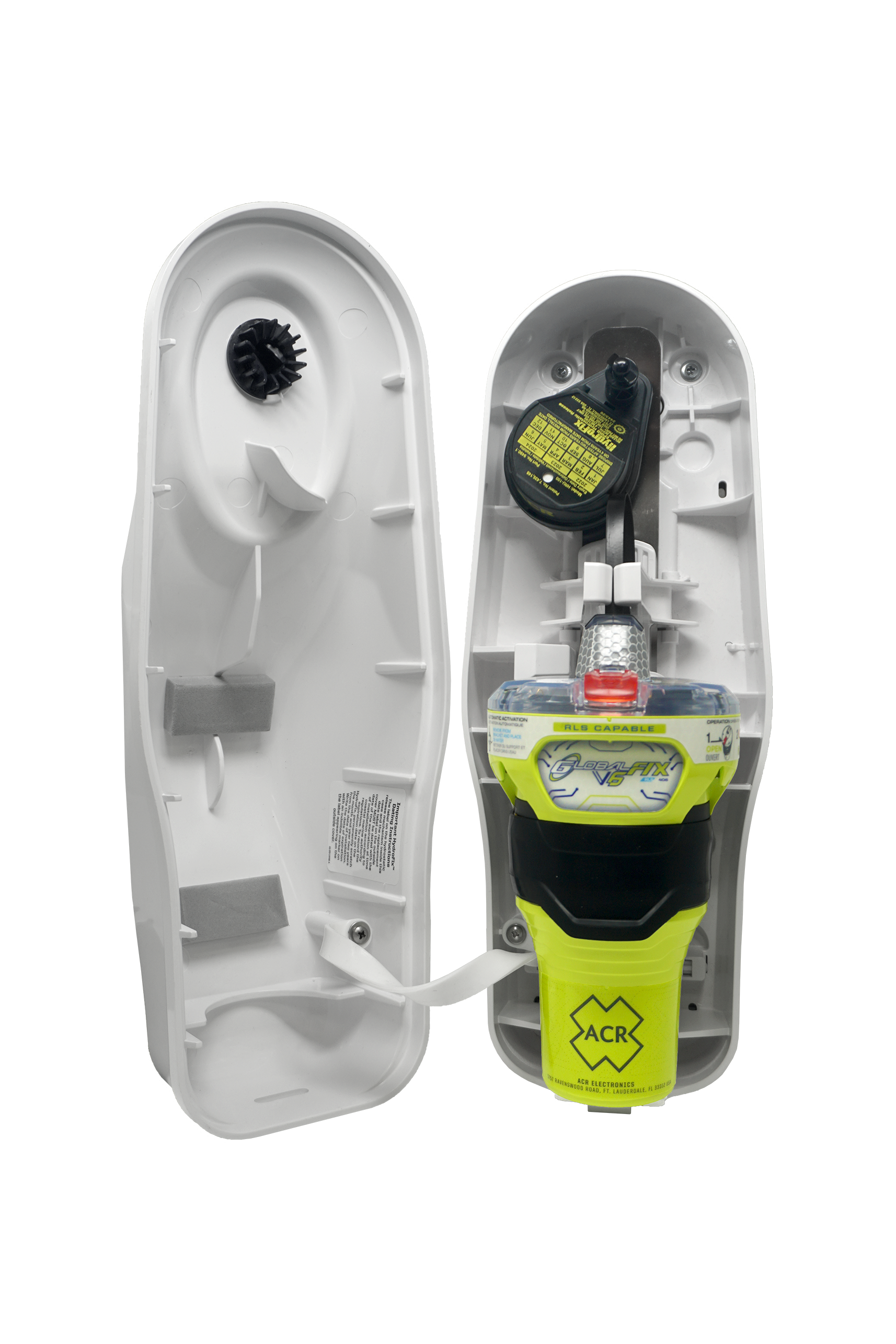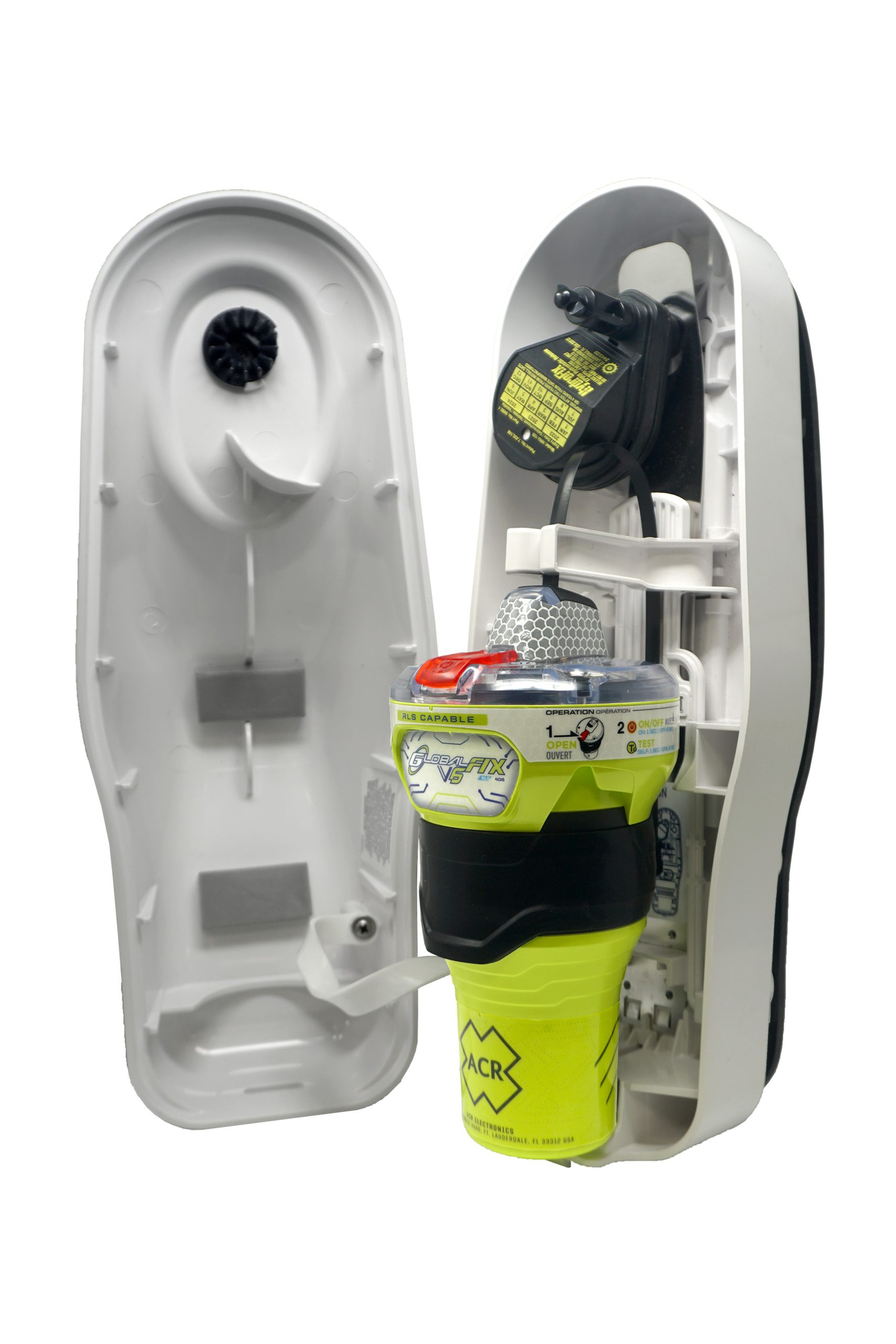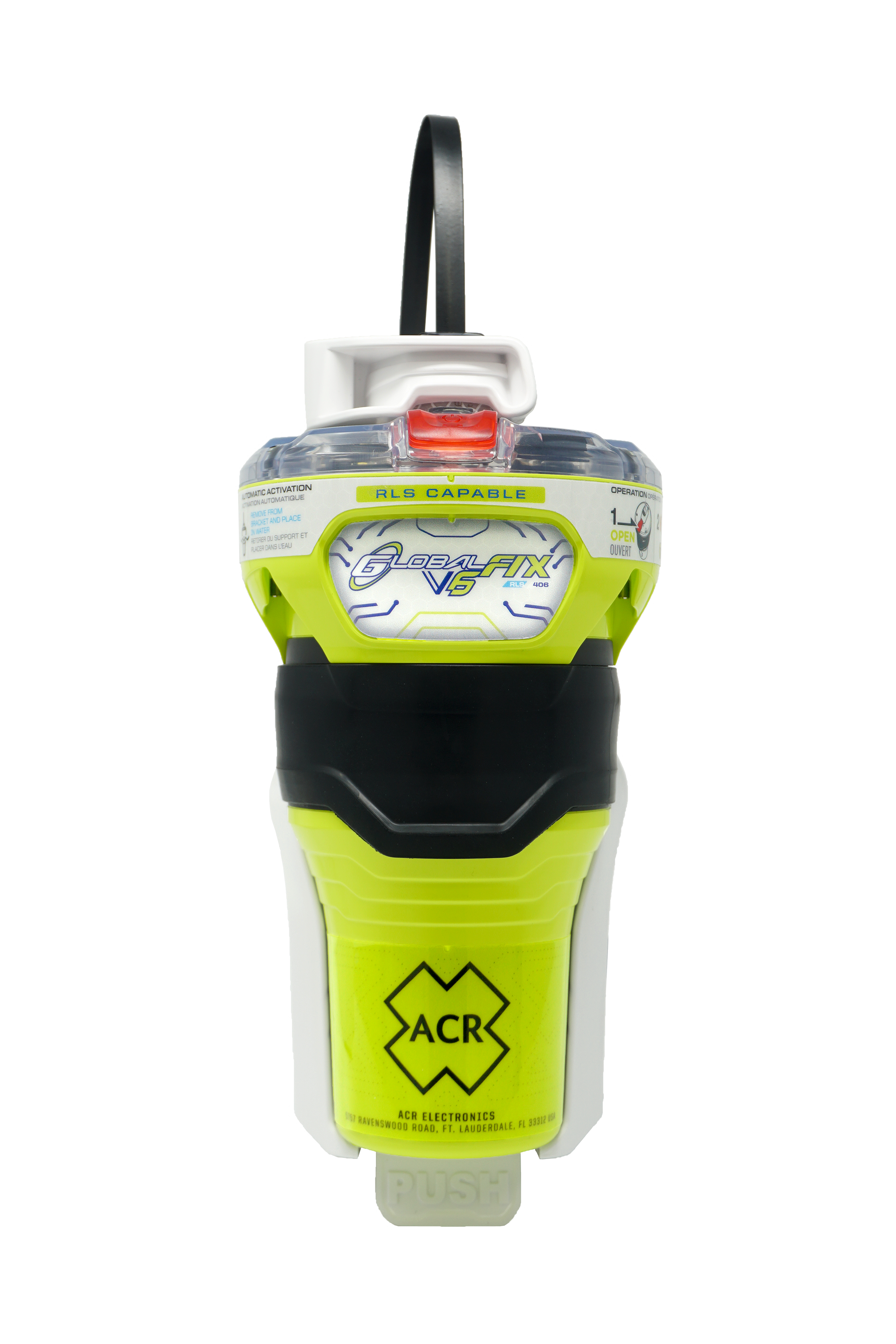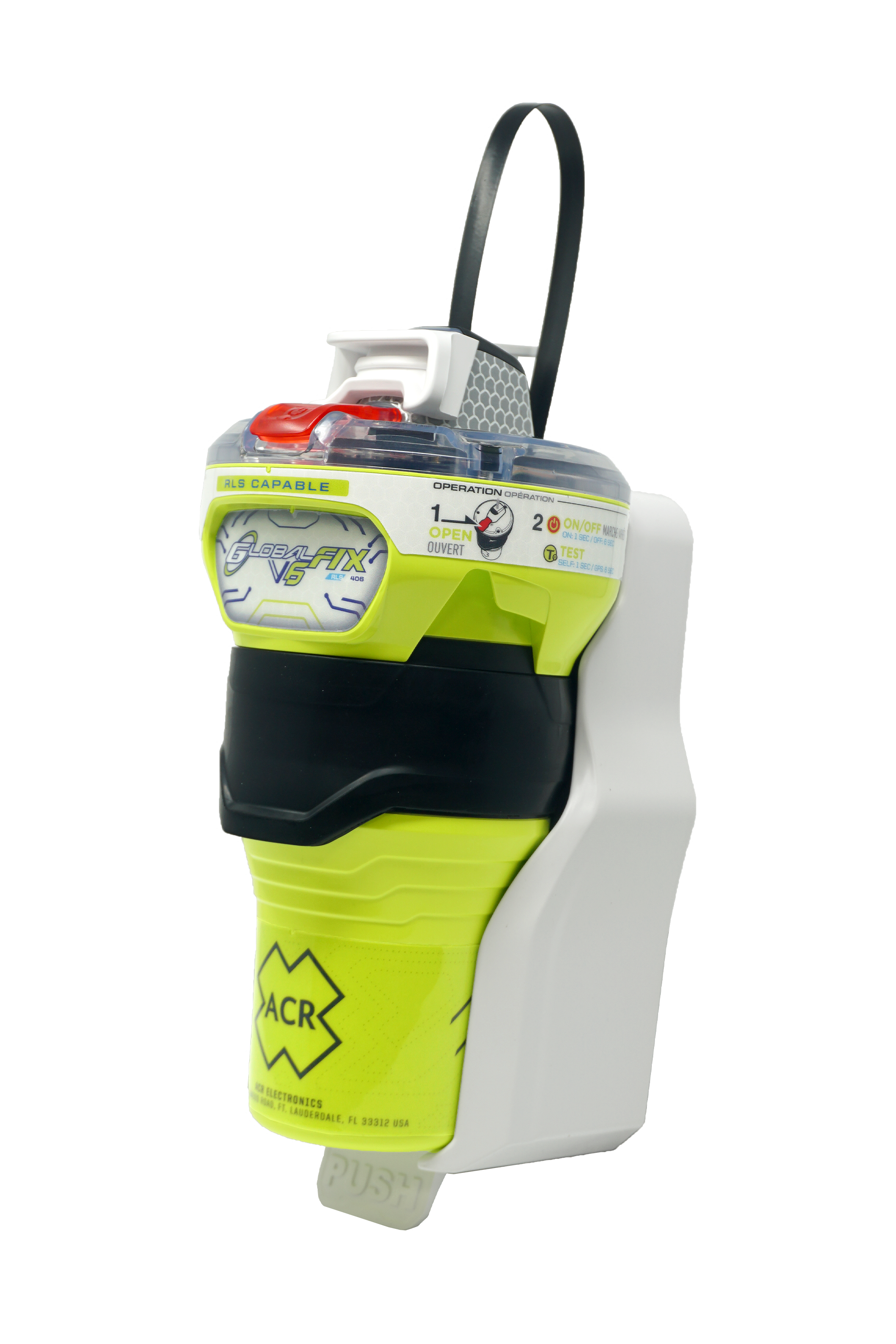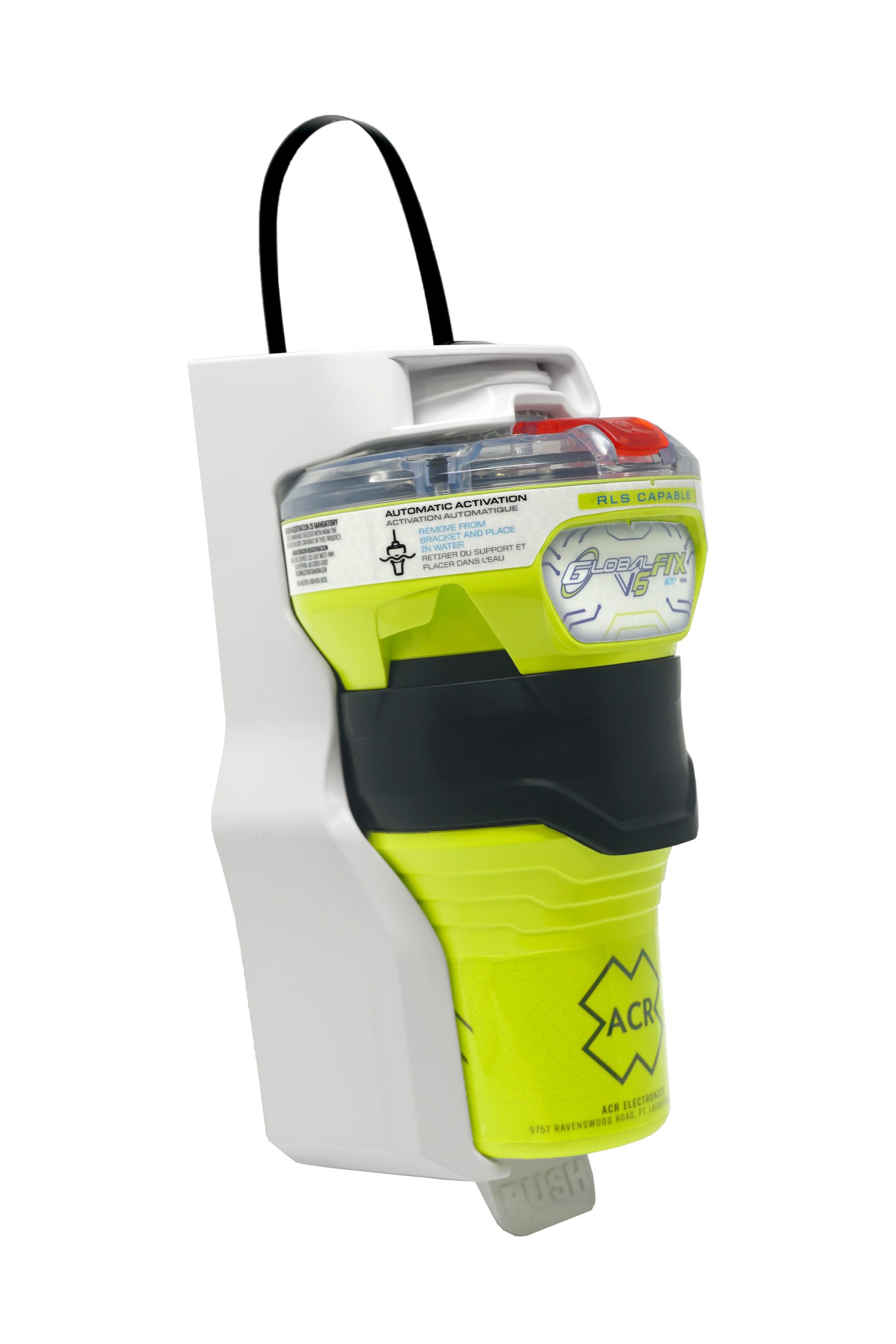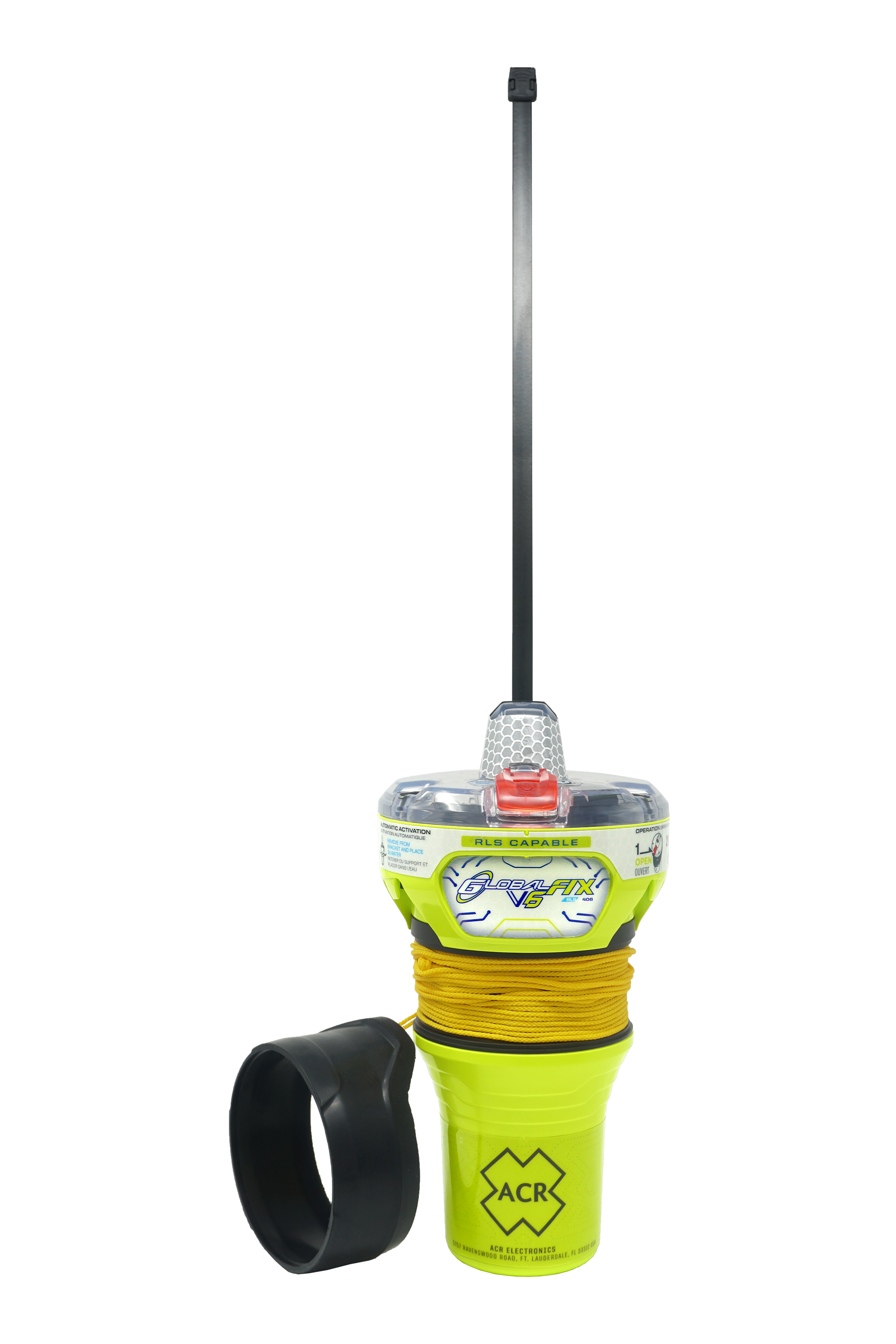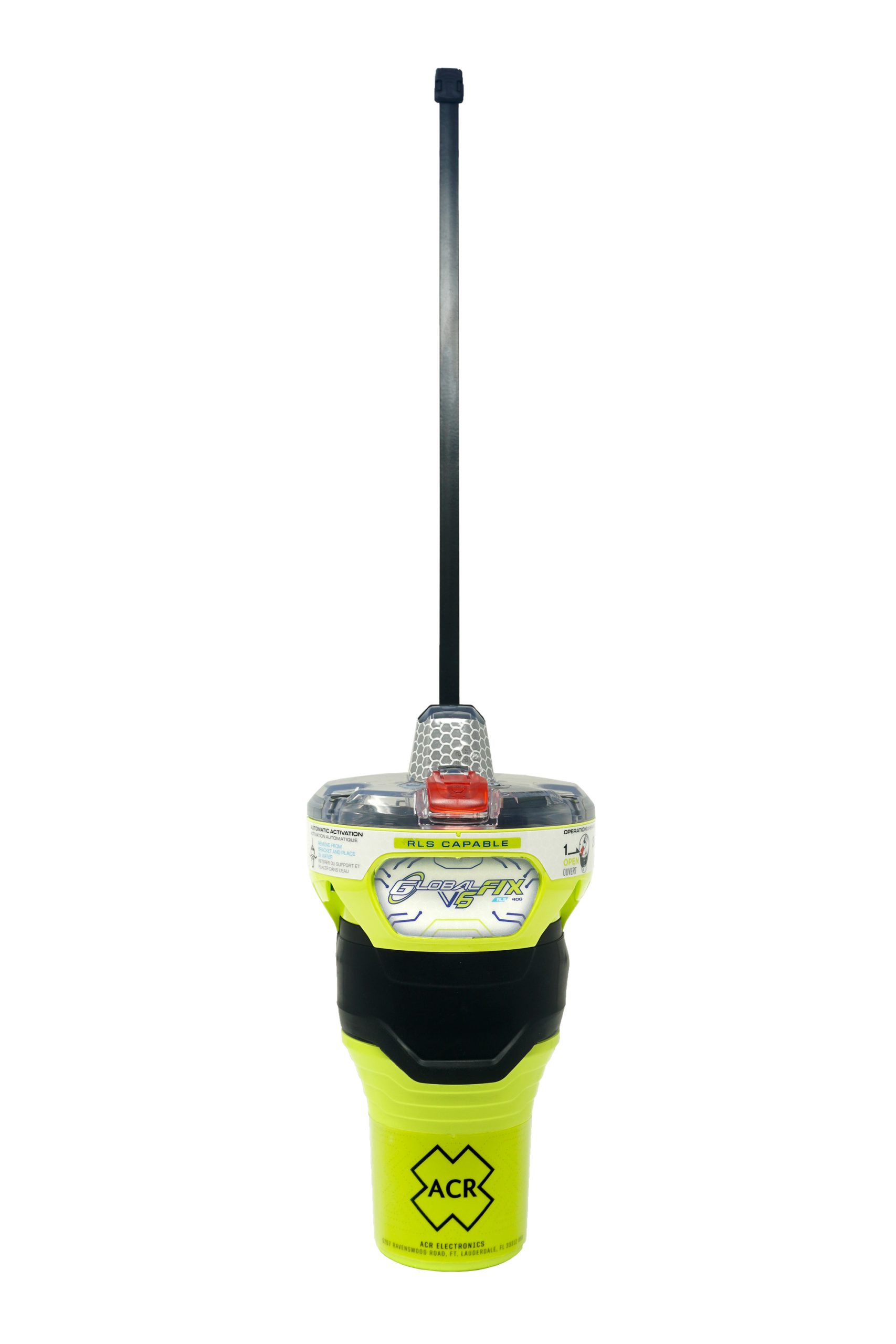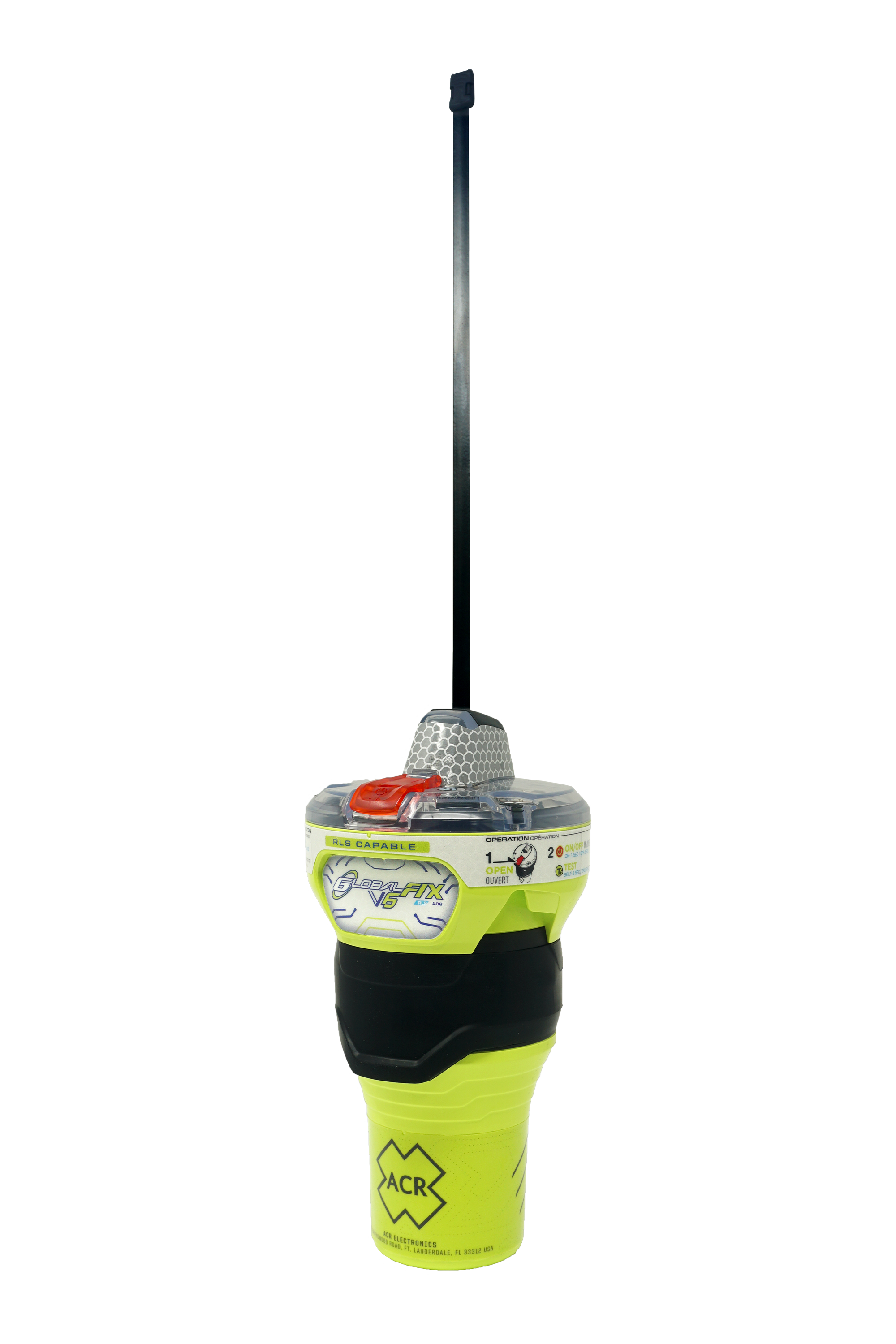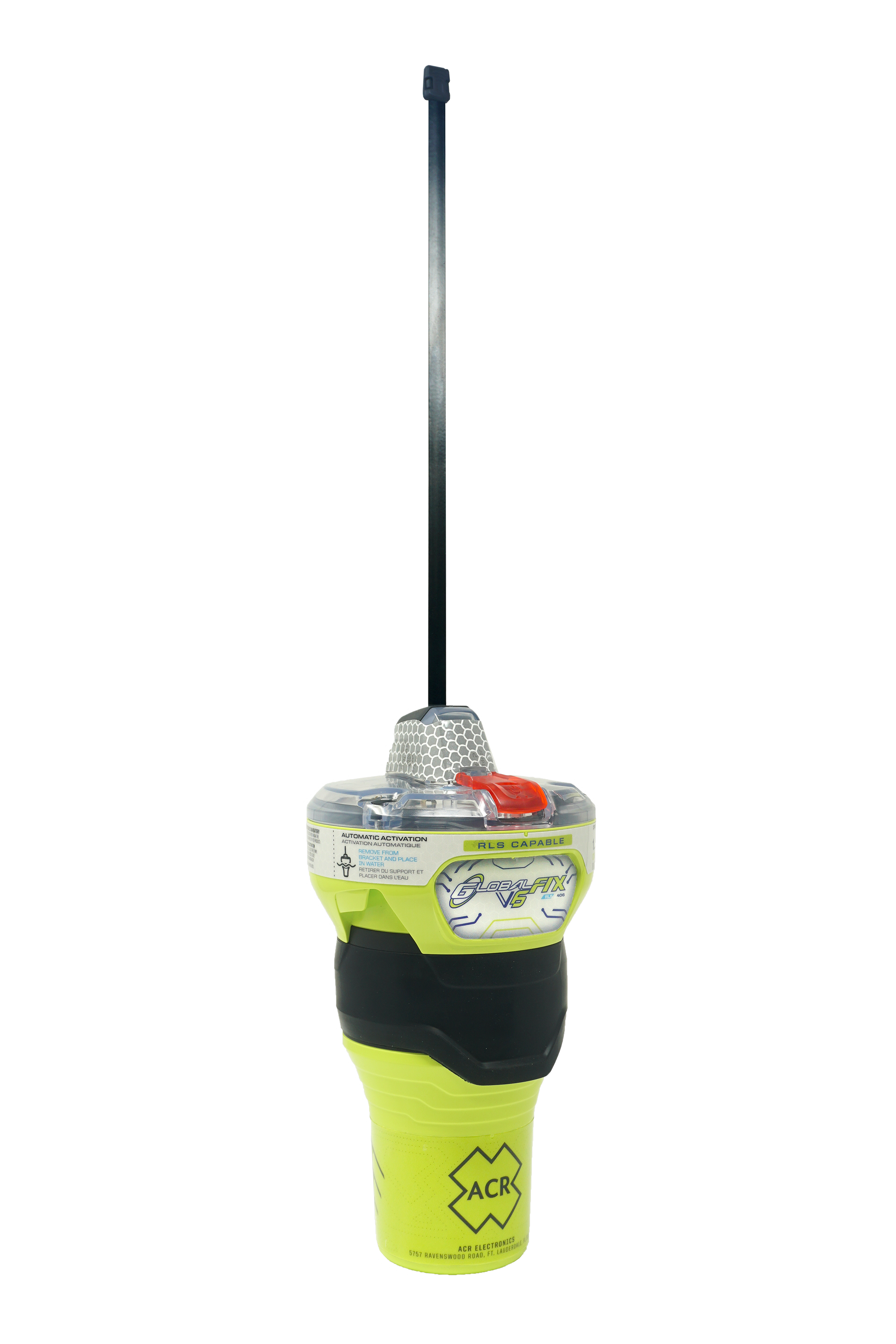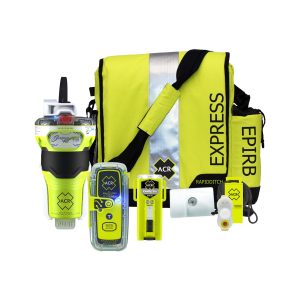Q: What do EPIRBs do?
Emergency Position Indicating Radio Beacons (EPIRBs) are distress radio beacons that transmit location information about ships directly to Search and Rescue forces letting them know that the owner is in grave and imminent danger. Learn How A Rescue Works
Q: What is RLS or Return Link Service?
Return Link Service or RLS enables newly approved EPIRB, PLB, and ELT allowing for a confirmation signal (Example: blue light flashing or message if the beacon has a digital display) that the distress signal from the beacon has been received and localized by the Cospas-Sarsat system and forwarded to government authorities for action. It does NOT mean that a rescue has yet been organized/launched, only that the distress alert has been received and routed to the appropriate government agencies. The RLS confirmation signal or message should typically be received back to the RLS beacon between 10-20 minutes as Search and Rescue is working to facilitate your rescue. Learn more about Return Link Service
Q: What is a GPIRB?
Some people call a GPS EPIRB or Emergency Position Indicating Radio Beacon a GPIRB.
Q: Whats the difference between an AIS EPIRB and a traditional EPIRB?
AIS EPIRBs will offer both recreational and commercial users the extra reassurance that other nearby vessels equipped with an AIS Transceiver will be notified in an emergency, in addition to the beacon’s traditional capabilities to transmit a 406 MHz distress signal via the Cospas-Sarsat satellite system to contact global rescue services. Introducing the AIS locating signal ensures a signal will also be received by all vessels and aircraft equipped with AIS in the vicinity, enabling them to respond with immediate assistance.
Q: What is NFC?
Near-field communication (NFC) is a short-range wireless connectivity technology that uses magnetic field induction to enable communication between devices when they’re touched together or brought within a few centimeters of each other. The beacons data and activity is stored and when your phone is within range, the beacons NFC uses the phones power to push the data into your phone and into your Beacons Mobile App. https://www.youtube.com/watch?v=WqE0ag4yqG4
Q: Where can I purchase a beacon?
Visit our Where To Buy dealer locator or purchase direct from ACRARTEX.com
Q: Will 406 MHz beacons work anywhere in the world?
Yes, 406 MHz beacons can be used anywhere in the world, including at both poles, just remember that you need a clear view of the sky (they will not work in buildings or caves, etc.)
Q: Is there a subscription fee for beacon registration or rescue service?
Beacon registration is free, should you ever have to activate your beacon, rescue is free in most parts of the world.
Q: What is the difference between a Category I and a Category II EPIRB?
The difference is in how the EPIRB is deployed from the provided EPIRB bracket. A Category I beacon automatically deploys when a vessel sinks. The beacon floats free at a depth of 1.5 to 3.0m (4.9 to 13.1ft). The EPIRB can be manually activated while in its bracket or manually removed and activated. A Category II beacon is manually deployed. The EPIRB will automatically activate when removed from its bracket and comes in contact with water, or when it is still in its bracket but a person has lifted the switch to the activation position.
Both the Category 1 and Category 2 brackets will deactivate the EPIRBs water sensor feature so if the EPIRB should get wet while in the bracket, it will not cause a false alarm. EPIRB water activation is only possible when the EPIRB has been removed from the bracket and gets wet.
Q: How do I register my beacon?
406 MHz Beacons must be registered with the National Authority of the country you live in.
Step 1. Visit our Registration database to find the appropriate National Authority
Step 2. Register with your countries National Authority via Mail, Fax, or for the fastest service register online. Registration in the United States The national authority that accepts beacon registrations in the United States is the National Oceanic and Atmospheric Administration (NOAA). Here are three easy ways to register:
1.) The fastest and easiest way to register is online at www.beaconregistration.noaa.gov. Recommended method. Verify and validate information before submitting it.
2.) Mail the registration form with the pre-addressed, postage-paid envelope to:
SARSAT BEACON REGISTRATION NOAA NSOF, E/SPO53
1315 East-West Hwy Silver Spring, MD 20910
Please print legibly.
3.) Faxing a registration is also acceptable. Fax the registration form to the Fax number on the bottom of the registration form. To reduce the possibility of erroneous entry please verify the legibility of information and validate information on the form to UIN on beacon before faxing. Please print legibly and in BLACK ink. All registration forms will be entered in the 406 MHz beacon registration database within 48 hours of receipt. The information you provide on the registration form is used for rescue purposes only. A confirmation letter, a copy of the actual registration, and a proof-of-registration decal will be mailed to you within two weeks. When you receive these documents, please check the information carefully to ensure that the information provided on the label agrees with the information on the beacon and then affix the decal to your beacon in the area marked \”BEACON DECAL HERE.\” If you do not receive confirmation from NOAA in the expected timeframe, or if the information on the label is incorrect call toll-free 1-888-212-7283 for assistance. Registration outside of the United States In countries other than the United States, 406 MHz beacons are registered with that country\’s national authority at the time of purchase. The sales agent should have assisted you in filling out the forms and sending them to the country\’s national authority. Alternatively, visit our Registration database or many countries allow online registration in the International 406MHz Beacon Registration Database (IBRD) at www.406registration.com.
To verify that the unit is properly programmed for your country, view the UIN label on the back of the unit. If the beacon is not programmed for your country, the sales agent (if properly equipped) can reprogram the unit for the correct country.
Q: Why is it so important for me to register my beacon?
Registering the EPIRB, ELT, or Personal Locator Beacon is required by law in the United States and most countries. Registering is very important because should your beacon ever be activated, it is how Search and Rescue Teams will know who you are, and contacts provided may be able to supply information about your specific travel plans. In the absence of this information, it may take longer for a search-and-rescue operation to begin.
Q: How do I know the beacon is working?
Perform a monthly self-test. If the test passes, the beacon is working. If self-test does not pass, take/send the beacon in for service.
If your EPIRB has NFC and the new ACR Mobile App, you can also view your EPIRBs detailed test results by scanning the NFC antenna and pulling the beacons data into your ACR Mobile App.
If you want to know that your beacon signal is reaching the satellite system and your signal is being received back down to earth please check out our advanced testing service called 406Link.com.
Q: How often should I carry out a Self Test?
The beacon owners manual recommends the frequency of these tests; typical advice is once a month and/or before extended trips.
If your EPIRB has NFC and the new ACR Mobile App, you can also view your EPIRBs detailed test results by scanning the NFC antenna and pulling the beacons data into your ACR Mobile App.
Q: The date on my HydroFix™ Release Unit is not marked. What do I do?
The HydroFix should be marked by the owner at the time of installation with an indelible ink pen. The HydroFix Release Unit is good three years from the date of manufacture (which is imprinted on the bottom of the HydroFix?) or 2 years from the date of installation. See the example below: MFG.0622 means the HRU was made June (06) of 2022. Thus this unit will need to be replaced 2 years from the date installed or in June of 2024. HRU MFG Date
Q: Where do I mount my EPIRB?
Step 1: Determine a suitable mounting location.
Locate the beacon in a readily accessible location that is protected from outside influences. The location selected must be
sufficiently rigid to support the weight of the total installation.
Hazards to avoid when selecting a mounting location:
– Vibration
– Exposure to the elements, especially sun
– Possibility of impact from hatches, gear or personnel
– Harmful vapors
– Exhaust
– Harsh chemicals (i.e. paint removers)
– Locations that can be obscured by foreign articles on a temporary or permanent basis.
CAUTION: Category I brackets must be mounted free from obstruction, to allow the beacon to automatically float
free from the vessel. The Category I bracket can be mounted on a vertical surface with the beacon antenna pointing
skyward or on a horizontal surface with the beacon facing up. Avoid mounting locations that subject the bracket to
breaking waves. Avoid structures such as dodgers or cabin tops that could trap the beacon upon deployment.
CAUTION: Category II brackets must be mounted in a protected location that is easily accessible. The CAT II
bracket can be mounted on a vertical surface with the beacon antenna pointing skyward or on a horizontal surface with
the beacon facing up. Avoid mounting locations that subject the bracket to breaking waves and locations that do not
provide protection from harmful UV rays
Q: How do I maintain an EPIRB?
Taking care of a beacon is quick and easy. Routine maintenance is part of having the beacon ready at all times. Follow the maintenance recommendations in the Owner’s Manual and be sure to regularly self test your beacon to ensure it is working properly.
Q: Can I use my 406 MHz beacons anywhere in the world?
You should check the local regulations of any place you plan to visit with your beacon, some countries require you to have a radio license and a few countries have restrictions on the use of beacons, however, if it’s a real emergency you should always activate your beacon.
Q: What is a UIN and where do I find it on the beacon so I can register my beacon?
A UIN or Unique Identifier Number that is programmed into each beacon at the factory. The UIN number consists of 15 digit series of letters and numbers that make up the unique identity of the beacon. The UIN is on a white label on the exterior of the beacon. The UIN is also referred to as the Hex ID. If your EPIRB has NFC and the new ACR Mobile App, you can also get your UIN by scanning the NFC antenna and pulling the beacons data into your ACR Mobile App.
